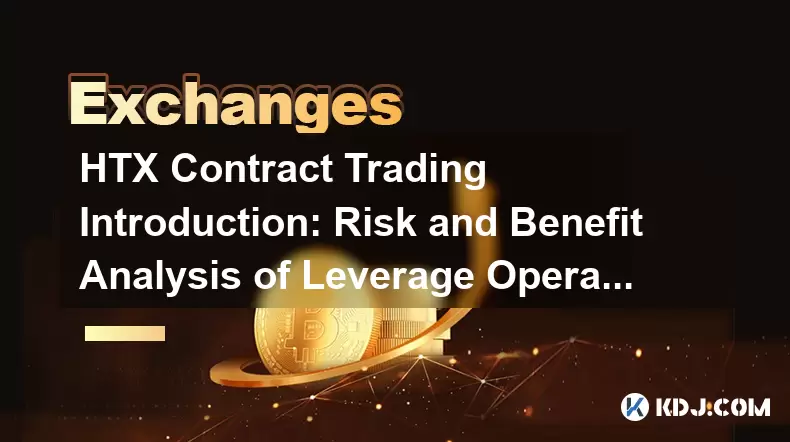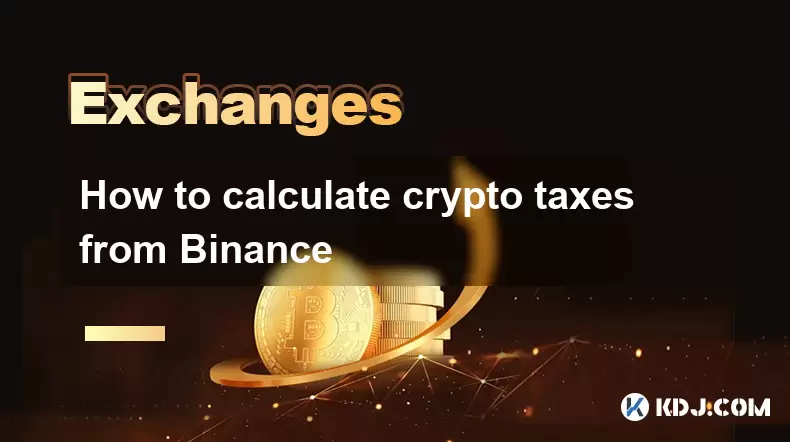-
 Bitcoin
Bitcoin $117500
2.15% -
 Ethereum
Ethereum $3911
6.19% -
 XRP
XRP $3.316
10.79% -
 Tether USDt
Tether USDt $1.000
0.01% -
 BNB
BNB $787.2
2.24% -
 Solana
Solana $175.2
4.15% -
 USDC
USDC $0.9999
0.00% -
 Dogecoin
Dogecoin $0.2225
8.40% -
 TRON
TRON $0.3383
0.28% -
 Cardano
Cardano $0.7868
6.02% -
 Stellar
Stellar $0.4382
9.34% -
 Hyperliquid
Hyperliquid $40.92
7.56% -
 Sui
Sui $3.764
7.63% -
 Chainlink
Chainlink $18.48
10.66% -
 Bitcoin Cash
Bitcoin Cash $582.1
1.88% -
 Hedera
Hedera $0.2601
6.30% -
 Avalanche
Avalanche $23.33
4.94% -
 Ethena USDe
Ethena USDe $1.001
0.02% -
 Litecoin
Litecoin $122.3
2.04% -
 UNUS SED LEO
UNUS SED LEO $8.969
-0.27% -
 Toncoin
Toncoin $3.339
0.86% -
 Shiba Inu
Shiba Inu $0.00001287
4.30% -
 Uniswap
Uniswap $10.43
7.38% -
 Polkadot
Polkadot $3.861
5.08% -
 Dai
Dai $1.000
0.02% -
 Bitget Token
Bitget Token $4.513
3.41% -
 Monero
Monero $267.7
-6.18% -
 Cronos
Cronos $0.1499
4.14% -
 Pepe
Pepe $0.00001110
5.15% -
 Aave
Aave $284.9
8.28%
HTX Contract Trading Introduction: Risk and Benefit Analysis of Leverage Operation
HTX offers leverage in contract trading, amplifying potential profits and losses; traders must manage risks carefully to avoid significant financial setbacks.
May 29, 2025 at 09:28 pm

HTX Contract Trading Introduction: Risk and Benefit Analysis of Leverage Operation
HTX, formerly known as Huobi, is a leading cryptocurrency exchange that offers a variety of trading products, including contract trading. Contract trading, also known as futures trading, allows traders to speculate on the future price of cryptocurrencies without owning the underlying asset. One of the key features of contract trading on HTX is the use of leverage, which can significantly amplify both potential profits and losses. In this article, we will delve into the mechanics of HTX contract trading, analyze the risks and benefits of using leverage, and provide a comprehensive guide to getting started with leverage operations on HTX.
Understanding HTX Contract Trading
HTX offers several types of contract trading products, including USDT-Margined Contracts and Coin-Margined Contracts. USDT-Margined Contracts are settled in USDT, a stablecoin pegged to the US dollar, while Coin-Margined Contracts are settled in the underlying cryptocurrency. Both types of contracts allow traders to use leverage, which means they can open positions with a fraction of the total value of the trade.
Leverage is essentially borrowing capital from the exchange to increase the size of a trade. For example, with 10x leverage, a trader can open a position worth $10,000 with just $1,000 of their own capital. This can lead to significant gains if the market moves in the trader's favor, but it also increases the risk of substantial losses if the market moves against them.
Benefits of Leverage in HTX Contract Trading
The primary benefit of using leverage in HTX contract trading is the potential for amplified profits. If a trader correctly predicts the direction of the market, the use of leverage can significantly increase their returns. For example, if a trader uses 10x leverage and the market moves 1% in their favor, their position could gain 10% in value.
Another benefit of leverage is the ability to trade with limited capital. Traders with smaller accounts can still participate in the market and potentially earn significant profits by using leverage. This democratizes access to trading opportunities that might otherwise be out of reach for many investors.
Additionally, leverage allows traders to hedge their existing positions. By opening leveraged positions in the opposite direction of their spot holdings, traders can protect themselves against adverse market movements. This can be particularly useful for long-term holders who want to mitigate short-term volatility.
Risks of Leverage in HTX Contract Trading
While leverage can offer significant benefits, it also comes with substantial risks. The most obvious risk is amplified losses. Just as leverage can magnify profits, it can also magnify losses. If the market moves against a leveraged position, the trader could lose more than their initial investment. In the worst-case scenario, a trader could be liquidated, meaning their position is forcibly closed by the exchange to prevent further losses.
Another risk of leverage is margin calls. When a trader's position moves against them, they may be required to add more funds to their account to maintain the position. Failure to meet a margin call can result in the position being liquidated. This can happen quickly in volatile markets, leaving traders with little time to react.
Overtrading is another potential risk associated with leverage. The allure of potential high returns can lead traders to take on more risk than they can handle, opening multiple leveraged positions and increasing their exposure to market volatility. This can result in significant losses if the market moves against them.
Getting Started with Leverage Operations on HTX
To start using leverage on HTX, traders need to follow a few key steps:
Create an Account: First, traders need to sign up for an account on HTX. This involves providing basic personal information and completing the necessary KYC (Know Your Customer) verification.
Deposit Funds: After creating an account, traders need to deposit funds into their HTX wallet. This can be done using various payment methods, including bank transfers, credit cards, and cryptocurrency deposits.
Navigate to Contract Trading: Once funds are deposited, traders can navigate to the contract trading section of the HTX platform. Here, they can choose between USDT-Margined Contracts and Coin-Margined Contracts.
Select Leverage: Before opening a position, traders need to select the desired level of leverage. HTX offers various leverage options, ranging from 1x to 125x, depending on the specific contract.
Open a Position: After selecting the leverage, traders can open a position by specifying the amount they want to trade and the direction (long or short). They can also set stop-loss and take-profit orders to manage their risk.
Monitor and Manage the Position: Once the position is open, traders need to monitor the market and manage their position accordingly. This may involve adjusting the stop-loss and take-profit levels, adding or reducing margin, or closing the position entirely.
Strategies for Managing Risk in Leveraged Trading
Effective risk management is crucial when using leverage in contract trading. Here are some strategies that traders can use to manage their risk:
Use Stop-Loss Orders: Stop-loss orders can help limit potential losses by automatically closing a position if the market moves against it. Traders should set their stop-loss levels at a point where they are comfortable with the potential loss.
Diversify Positions: Instead of putting all their capital into a single leveraged position, traders can diversify their portfolio by opening multiple positions across different assets. This can help spread the risk and reduce the impact of any single loss.
Start with Low Leverage: New traders should start with low leverage levels to gain experience and build confidence. As they become more comfortable with the market and their trading strategy, they can gradually increase their leverage.
Regularly Review and Adjust: Traders should regularly review their positions and adjust their strategy as needed. This may involve closing losing positions, taking profits on winning positions, or adjusting their leverage and margin levels.
Frequently Asked Questions
Q: What is the difference between USDT-Margined Contracts and Coin-Margined Contracts on HTX?
A: USDT-Margined Contracts are settled in USDT, a stablecoin pegged to the US dollar, while Coin-Margined Contracts are settled in the underlying cryptocurrency. The choice between the two depends on the trader's preference for settlement currency and their trading strategy.
Q: How does HTX determine the leverage levels available for different contracts?
A: HTX determines the available leverage levels based on factors such as the liquidity and volatility of the underlying asset. More liquid and less volatile assets typically have higher leverage options, while less liquid and more volatile assets may have lower leverage options.
Q: Can I change the leverage level on an existing position on HTX?
A: No, once a position is opened, the leverage level cannot be changed. Traders must close the existing position and open a new one with the desired leverage level.
Q: What happens if I fail to meet a margin call on HTX?
A: If a trader fails to meet a margin call, HTX will automatically liquidate the position to prevent further losses. The liquidation price is predetermined and depends on the leverage level and the size of the position.
Disclaimer:info@kdj.com
The information provided is not trading advice. kdj.com does not assume any responsibility for any investments made based on the information provided in this article. Cryptocurrencies are highly volatile and it is highly recommended that you invest with caution after thorough research!
If you believe that the content used on this website infringes your copyright, please contact us immediately (info@kdj.com) and we will delete it promptly.
- Tron's Sell-Off Spurs Altcoin Shift: What's Next for TRX?
- 2025-08-08 08:30:12
- RUVI Presale: Is the Growth Potential Real?
- 2025-08-08 09:10:12
- Sleep Token's US Takeover: Thornhill Rides the 'Even In Arcadia' Wave
- 2025-08-08 08:30:12
- FTT Token's Wild Ride: Creditor Repayments vs. Market Drop - A New Yorker's Take
- 2025-08-08 07:10:12
- Floki Crypto Price Prediction: Riding the Robinhood Rocket or Just a Meme?
- 2025-08-08 07:15:12
- EigenLayer, Restaking, and Ethereum: Navigating the Hype and the Hazards
- 2025-08-08 06:30:12
Related knowledge

How to use margin trading on Poloniex
Aug 08,2025 at 09:50am
Understanding Margin Trading on Poloniex

How to use advanced trading on Gemini
Aug 08,2025 at 04:07am
Understanding Advanced Trading on GeminiAdvanced trading on Gemini refers to a suite of tools and order types designed for experienced traders who wan...

How to deposit USD on Bitstamp
Aug 07,2025 at 05:18pm
Understanding Bitstamp and USD DepositsBitstamp is one of the longest-standing cryptocurrency exchanges in the industry, offering users the ability to...

How to use the Kraken Pro interface
Aug 08,2025 at 09:57am
Understanding the Kraken Pro Interface LayoutThe Kraken Pro interface is designed for both novice and experienced traders seeking a streamlined experi...

How to find my transaction ID on Gemini
Aug 08,2025 at 12:50am
Understanding the Transaction ID in Cryptocurrency ExchangesA transaction ID (TXID) is a unique alphanumeric string that identifies a specific transfe...

How to calculate crypto taxes from Binance
Aug 08,2025 at 07:56am
Understanding Cryptocurrency Taxation on BinanceCalculating crypto taxes from Binance requires a clear understanding of how tax authorities classify d...

How to use margin trading on Poloniex
Aug 08,2025 at 09:50am
Understanding Margin Trading on Poloniex

How to use advanced trading on Gemini
Aug 08,2025 at 04:07am
Understanding Advanced Trading on GeminiAdvanced trading on Gemini refers to a suite of tools and order types designed for experienced traders who wan...

How to deposit USD on Bitstamp
Aug 07,2025 at 05:18pm
Understanding Bitstamp and USD DepositsBitstamp is one of the longest-standing cryptocurrency exchanges in the industry, offering users the ability to...

How to use the Kraken Pro interface
Aug 08,2025 at 09:57am
Understanding the Kraken Pro Interface LayoutThe Kraken Pro interface is designed for both novice and experienced traders seeking a streamlined experi...

How to find my transaction ID on Gemini
Aug 08,2025 at 12:50am
Understanding the Transaction ID in Cryptocurrency ExchangesA transaction ID (TXID) is a unique alphanumeric string that identifies a specific transfe...

How to calculate crypto taxes from Binance
Aug 08,2025 at 07:56am
Understanding Cryptocurrency Taxation on BinanceCalculating crypto taxes from Binance requires a clear understanding of how tax authorities classify d...
See all articles

























































































